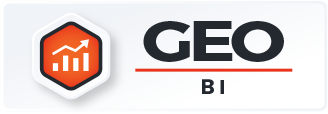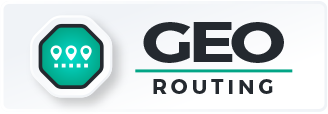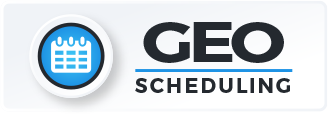- Blog
- Geo Routing
- What’s the Difference Between Map-Driven and Data-Driven Routing?
Not all routing tools are created equal. Some focus on visual navigation—plotting routes on a map—while others dig deeper into the data behind every trip. The real breakthrough comes when those two worlds collide. Map-driven routing helps you visualize movement, but data-driven routing transforms it into strategy. When used together, they turn logistics into a precise, self-improving system that saves time, fuel, and resources.
Mapline’s routing optimization software bridges the gap between both approaches. It doesn’t just show where your drivers are; it understands why they’re there. By combining mapping visualization with deep analytics, Mapline gives businesses a unified platform for smarter, faster, and more cost-effective deliveries.
What Is Map-Driven Routing?
Map-driven routing focuses on the geographic aspect of logistics. It helps planners visualize routes, delivery zones, and customer locations directly on a map. Tools like map routing software and map routing programs are built to provide spatial clarity—making it easier to assign territories, balance workloads, and track fleets in real time.
In Mapline, map-driven routing goes beyond simple visualization. You can overlay routes on top of Geo BI dashboards, view performance by territory, and spot inefficiencies instantly. This spatial awareness ensures that every route is designed with clear visibility, reducing confusion and improving on-time delivery rates.


Pro Tip: When evaluating routing solutions, ask whether the software only maps your routes, or whether it can analyze them too. With Mapline, you get the best of both worlds: visual clarity and data-driven intelligence that work together to power every mile.
What Is Data-Driven Routing?
While map-driven routing shows where things happen, data-driven routing explains why. It uses analytics, automation, and performance metrics to optimize decisions at scale. A data-driven routing platform considers every operational variable—fuel costs, delivery windows, vehicle capacity, driver schedules, and customer priorities—to find the most efficient plan.
Mapline’s routing optimization software combines live data feeds with machine learning to constantly improve performance. Over time, the system identifies trends, such as high-traffic zones or recurring delays, and automatically adjusts future routes. The result is a self-learning routing engine that gets more accurate, efficient, and profitable the longer you use it.
Map-Driven vs. Data-Driven Routing: Key Differences
While both approaches aim to improve efficiency, map-driven routing and data-driven routing serve very different purposes. Map-driven routing gives teams visual clarity, showing routes, territories, and driver locations at a glance. Data-driven routing, on the other hand, focuses on performance, using analytics and automation to calculate the most efficient delivery paths. The real power comes when these two approaches work together: maps provide intuitive visibility, while data ensures precision and optimization. Mapline’s routing optimization software merges both in one platform, giving businesses the ability to plan routes visually, execute them intelligently, and continuously refine them based on measurable results.
| Feature | Map-Driven Routing | Data-Driven Routing |
|---|---|---|
| Primary Focus | Visualizing routes, territories, and stops on a map | Optimizing performance using metrics and analytics |
| Core Strength | Geographic clarity and dispatch visibility | Cost reduction, speed, and efficiency at scale |
| Data Inputs | Addresses, delivery zones, driver locations | Traffic, delivery windows, capacity, labor cost, fuel usage |
| Output | Clear map view of where each driver is going | Automatically generated, optimized routes and schedules |
| Ideal Use Case | Territory planning, dispatch coordination, live tracking | Lowering delivery time and cost across high-volume operations |
| How It Scales | Supports day-to-day visibility for teams in the field | Learns over time and continually improves future routes |
| Mapline Advantage | Interactive Geo Routing maps and territory views in real time | Intelligent routing that automates planning and drives measurable savings |
Together, map-driven and data-driven routing form the foundation of intelligent routing, where visualization and analytics work hand-in-hand to streamline delivery operations.
Why the Future of Routing Is Both Map-Driven and Data-Driven
For years, routing software focused on one side of the equation—either mapping or data. But as logistics have become more complex, businesses need both visibility and intelligence to stay competitive.
Map-driven routing offers the geographic context planners need to see where operations unfold, while data-driven routing delivers the analytics and automation that make those operations efficient.
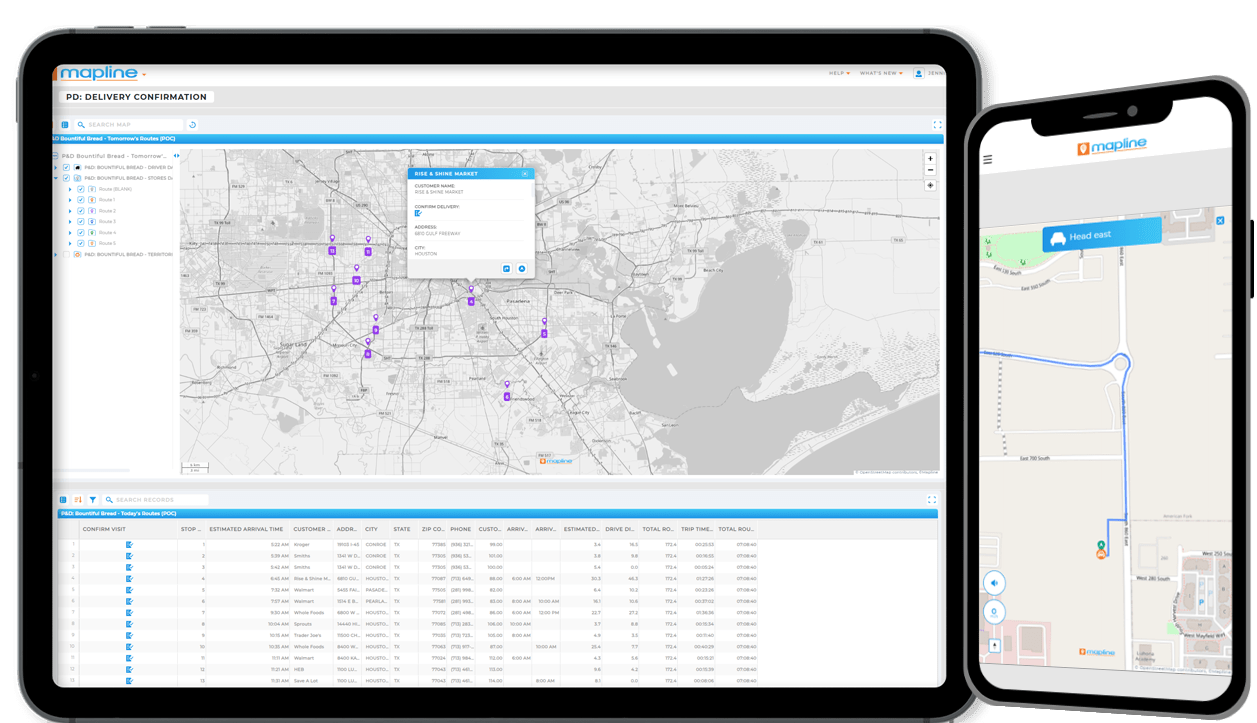
But relying solely on maps limits visibility to the surface level, while relying only on data can strip away the geographic context that makes routing intuitive. The smartest businesses use both. Mapline’s intelligent routing platform merges spatial clarity with data depth, giving planners the full picture—from individual stop sequences to long-term cost trends.
By combining fleet routing software, truck routing software, and lead routing software in one ecosystem, Mapline enables seamless coordination between field teams and management.
Every delivery, schedule, and customer route is visualized, analyzed, and optimized automatically—cutting costs while improving service quality.
That’s why the future lies in platforms that combine these strengths into one seamless system. Mapline’s intelligent routing platform merges real-time mapping with predictive analytics, allowing teams to plan routes visually, optimize automatically, and measure performance across every region. With both map and data working together, routing becomes not just efficient—but strategic.
How Mapline Transforms Routing Intelligence
Mapline’s platform makes routing intelligent, interactive, and effortless. You can plan complex routes with drag-and-drop precision, analyze fleet performance across regions, and automate dispatching—all within one unified dashboard. Its scheduling and routing software integrates with your existing data systems to provide real-time insights and predictive recommendations.
Unlike tools that focus on maps or metrics, Mapline combines both into a single, continuously improving system. The platform doesn’t just optimize travel—it optimizes your entire delivery strategy.
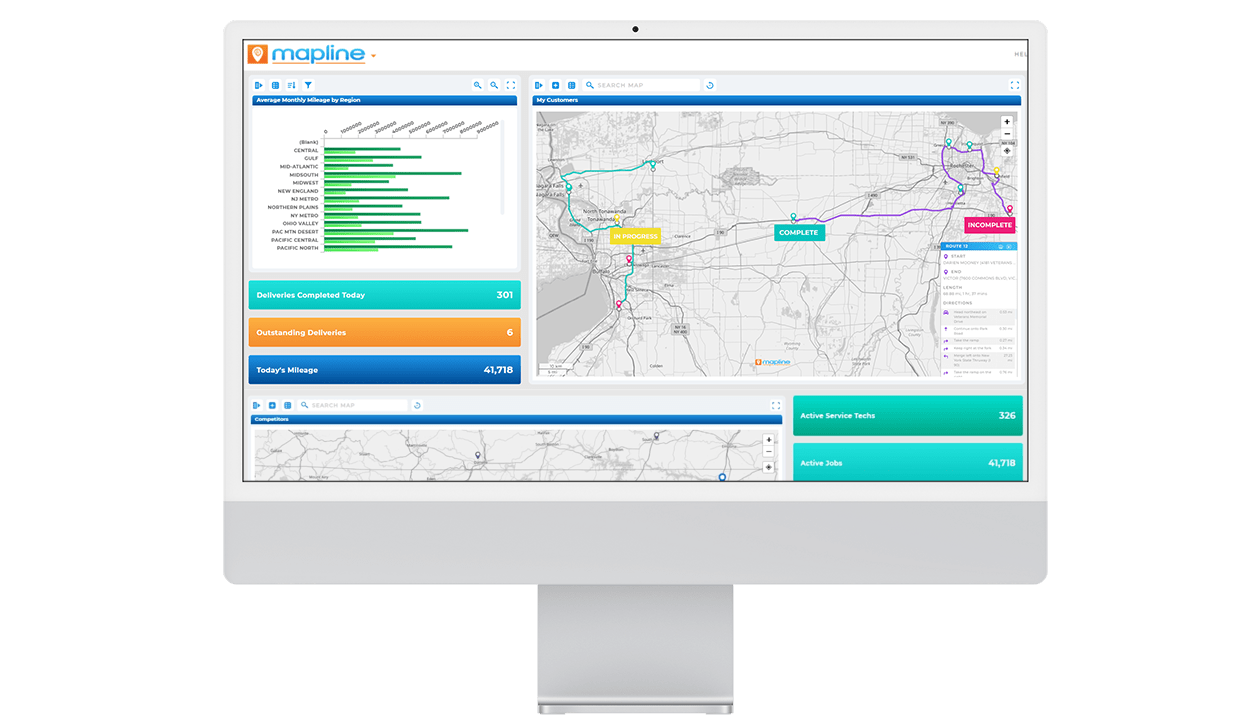
Map-driven routing focuses on geographic visualization, helping teams plan and track routes visually. Data-driven routing uses analytics to find the most efficient routes and optimize performance. Mapline combines both for a complete, intelligent routing experience.
It ensures every decision is backed by analytics, not guesswork. By analyzing real-time data like traffic, delivery time, and fuel usage, Mapline’s routing optimization software continuously improves efficiency and reduces cost.
Yes. Mapline functions as a full fleet routing software and truck routing software, allowing you to plan, track, and optimize routes for any number of vehicles and stops.
It provides visual clarity. Dispatchers can see routes, driver locations, and delivery progress directly on an interactive map, making adjustments in real time.
Combining the two gives you both clarity and control—visual awareness from maps and predictive insight from data analytics. Mapline’s platform merges both for maximum operational intelligence.
Absolutely. Mapline connects seamlessly with popular logistics, CRM, and ERP tools so your data flows automatically between systems, keeping your routes and dashboards up to date.
Yes. Whether you manage local deliveries or nationwide operations, Mapline scales effortlessly. Its intelligent algorithms handle thousands of stops, vehicles, and variables in seconds.






